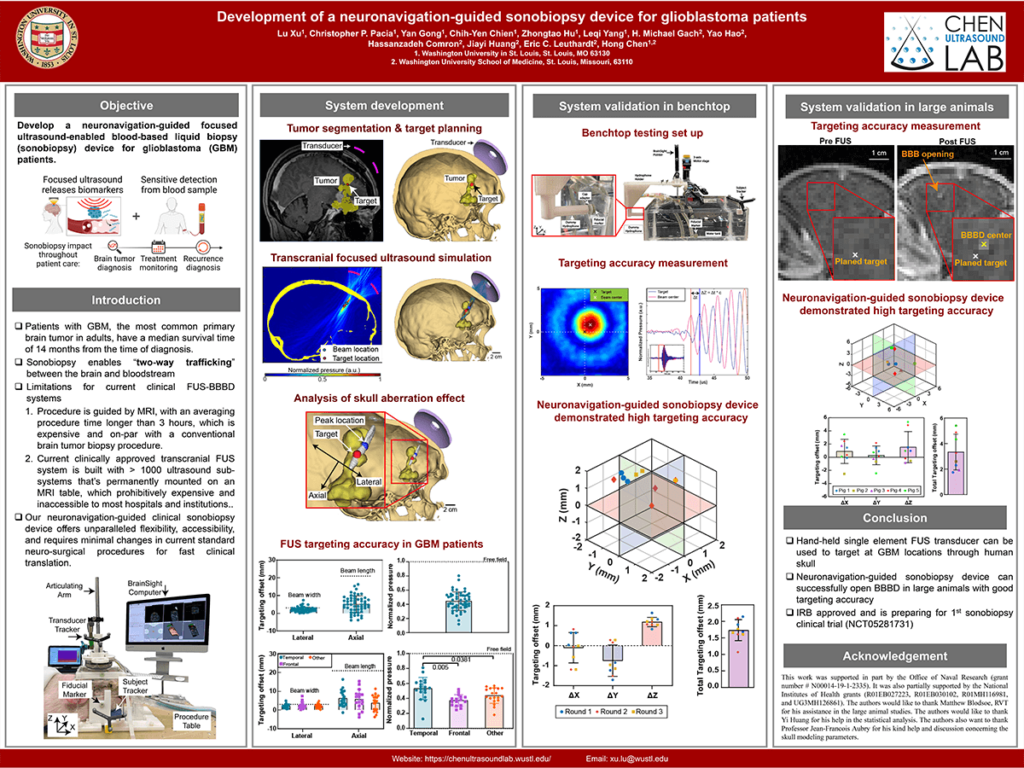Introduction: Focused ultrasound (FUS)-enabled liquid biopsy (sonobiopsy) is an emerging technique for the noninvasive and spatial-temporally controlled diagnosis of brain cancer by inducing blood-brain barrier (BBB) disruption to release brain tumor-specific biomarkers into the blood circulation. The feasibility, safety, and efficacy of sonobiopsy were demonstrated in both small and large animal models using magnetic resonance-guided FUS devices. To accelerate the adoption of sonobiopsy in the clinic, we developed a neuronavigation-guided sonobiopsy device, evaluated its targeting accuracy in a water tank and in vivo using a pig model, and assessed its feasibility for applications in glioblastoma patients using numerical simulation.
Methods: The sonobiopsy device integrated a commercially available neuronavigation system (BrainSight) with a nimble, lightweight FUS transducer (aperture=65 mm and weight = 2 lbs). Its accuracy in targeting specific location was characterized in a water tank using a hydrophone. The targeting accuracy was verified with in vivo pig studies by measuring the offsets between the intended and the actual locations of BBB opening. Numerical simulation using the K-wave toolbox was performed to assess the targeting accuracy of the FUS transducer in 54 glioblastoma patients.
Results: It was found that the targeting accuracy of the neuronavigation-guided sonobiopsy device as measured in the water tank was 1.40 mm ± 0.70 mm. The targeting accuracy evaluated based on in vivo pig study was 0.89 mm ± 2.24 mm. The transcranial targeting accuracy of the FUS transducer in glioblastoma patients with 5.49 mm ± 4.92mm. Age and sex were found to be not correlated with the offset, but different bones of skull in FUS trajectory was found to be significantly affecting the transcranial targeting accuracy.
Impact: This study showed that the developed neuronavigation-guided sonobiopsy device had a high spatial targeting accuracy, paving the foundation for its translation to clinical use.
Organization – Washington University in St. Louis
Ali L, Patel P, Vakaki M, Kremitzki C, Waligorski J, Chadrasekaran V, Kelley K, Bachman G, Xu L, Pacia CP, Gong Y, Chien CY, Hu Z, Yang L, Gach HM, Hao Y, Comron H, Huang J, Leuthardt EC, Chen H
